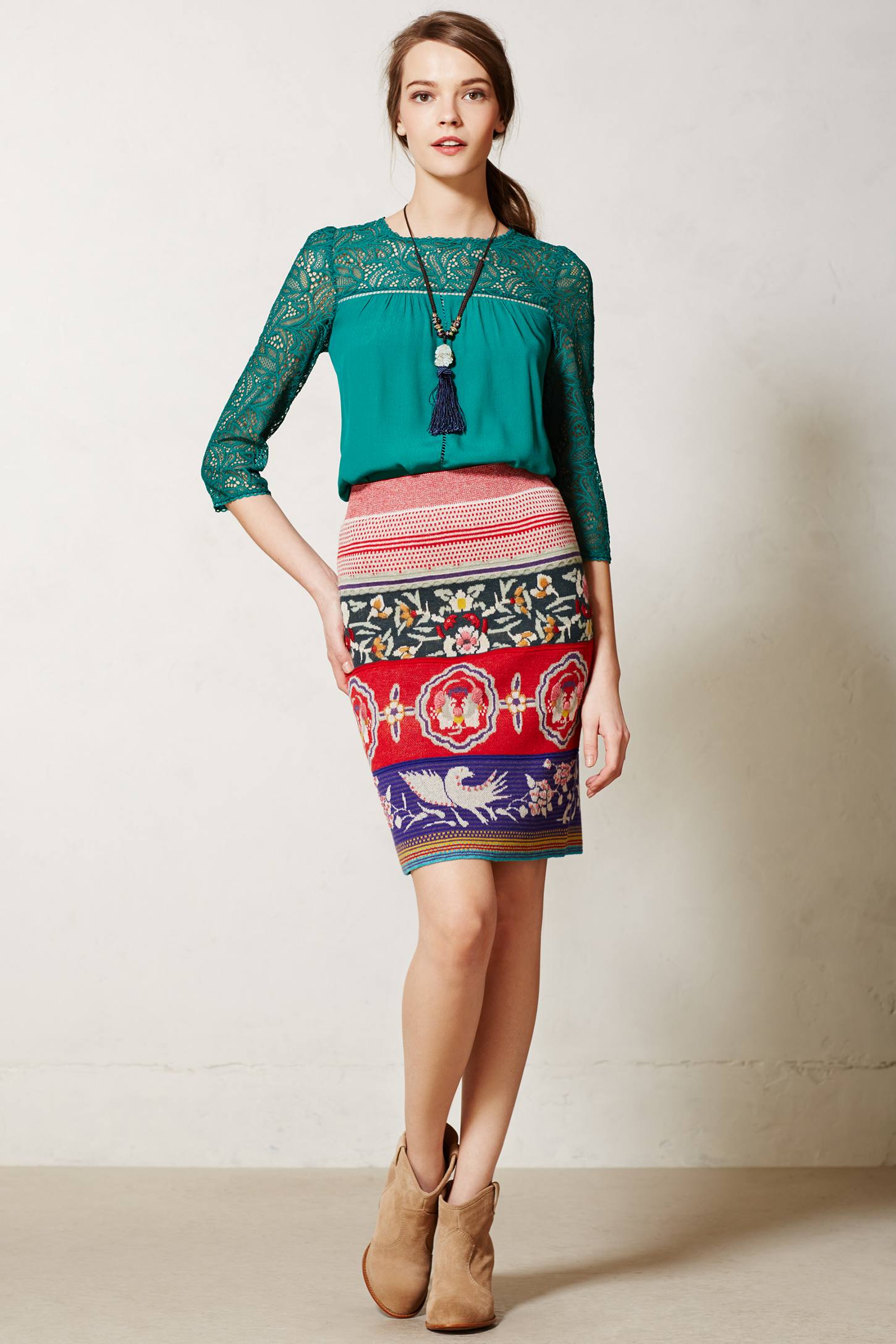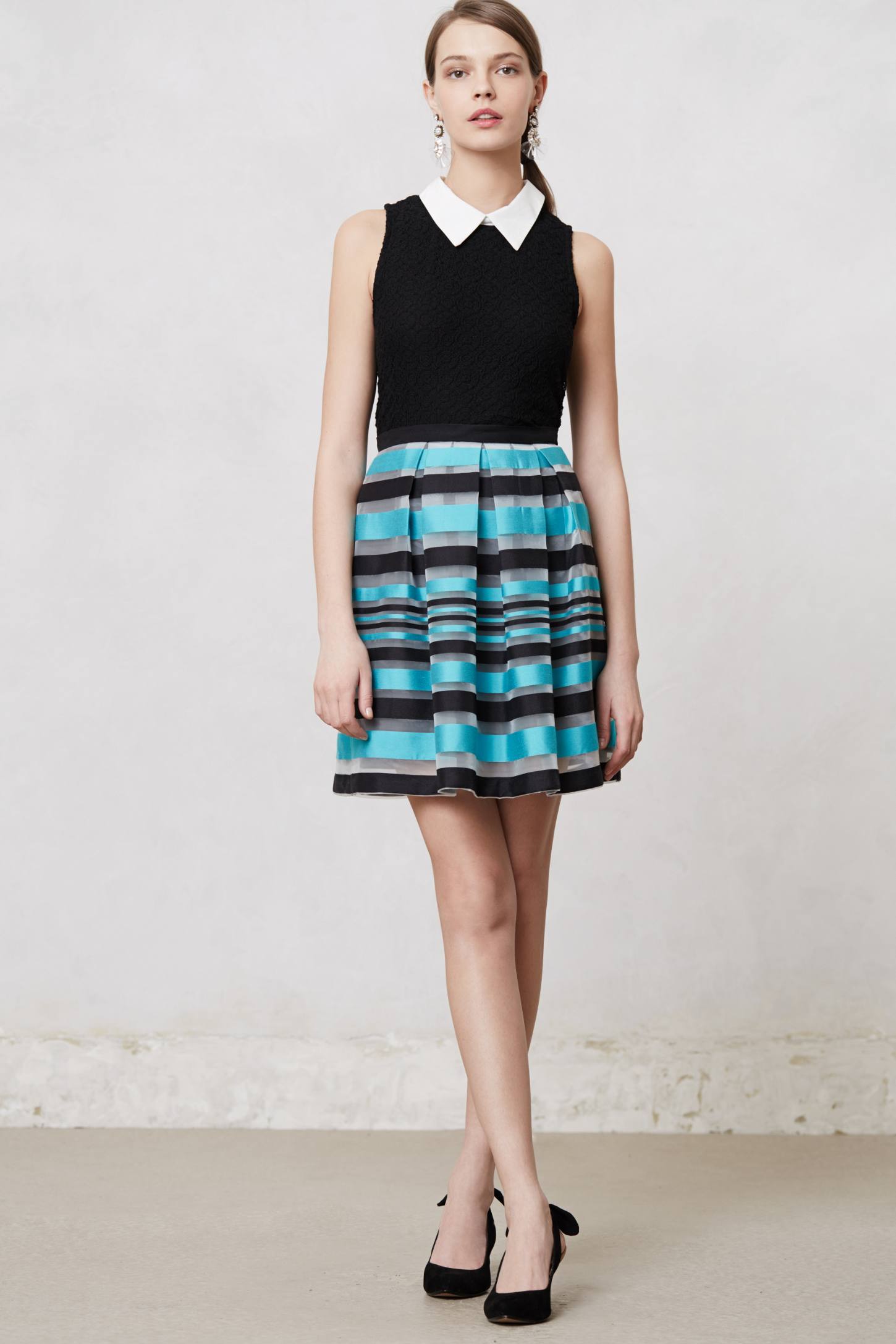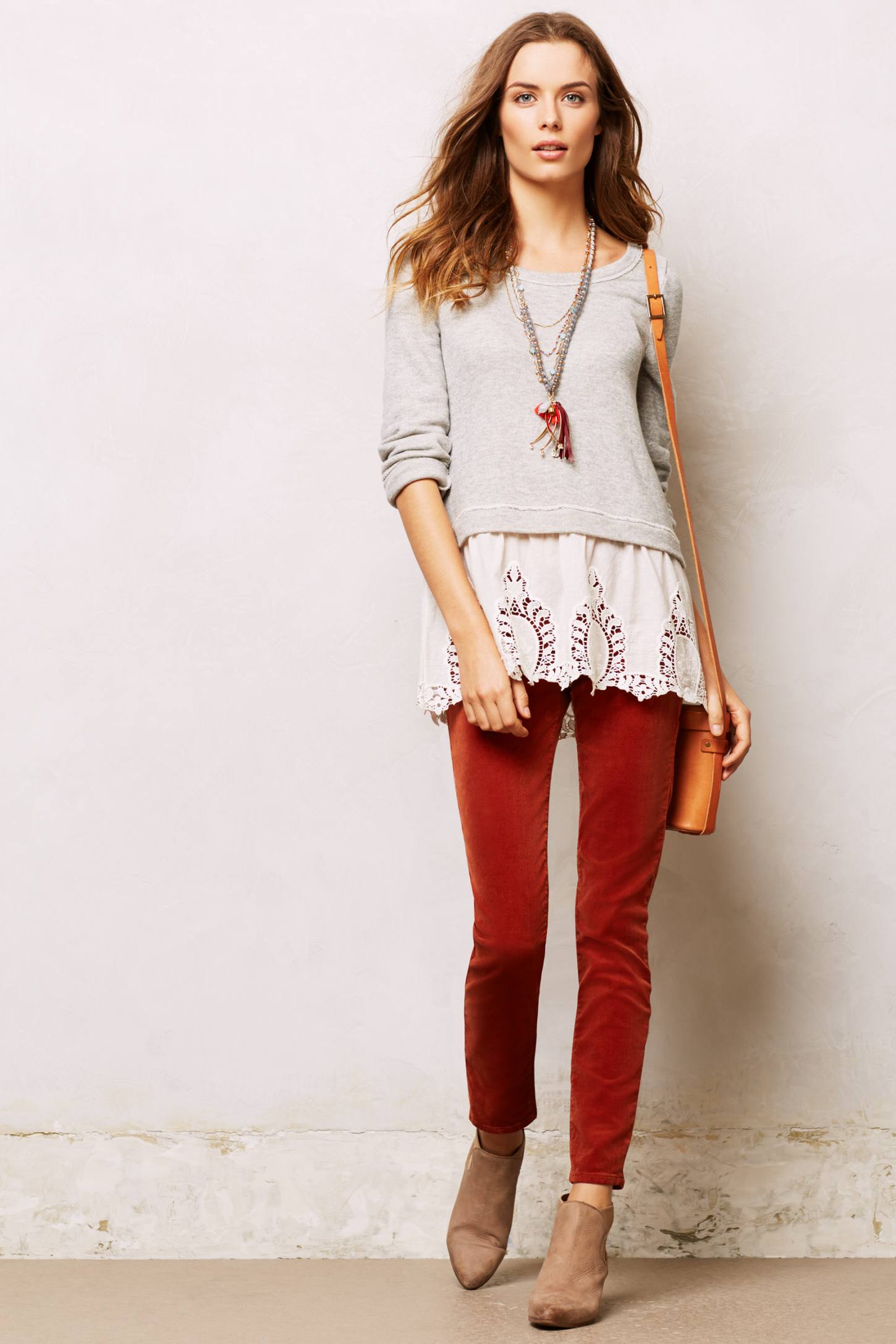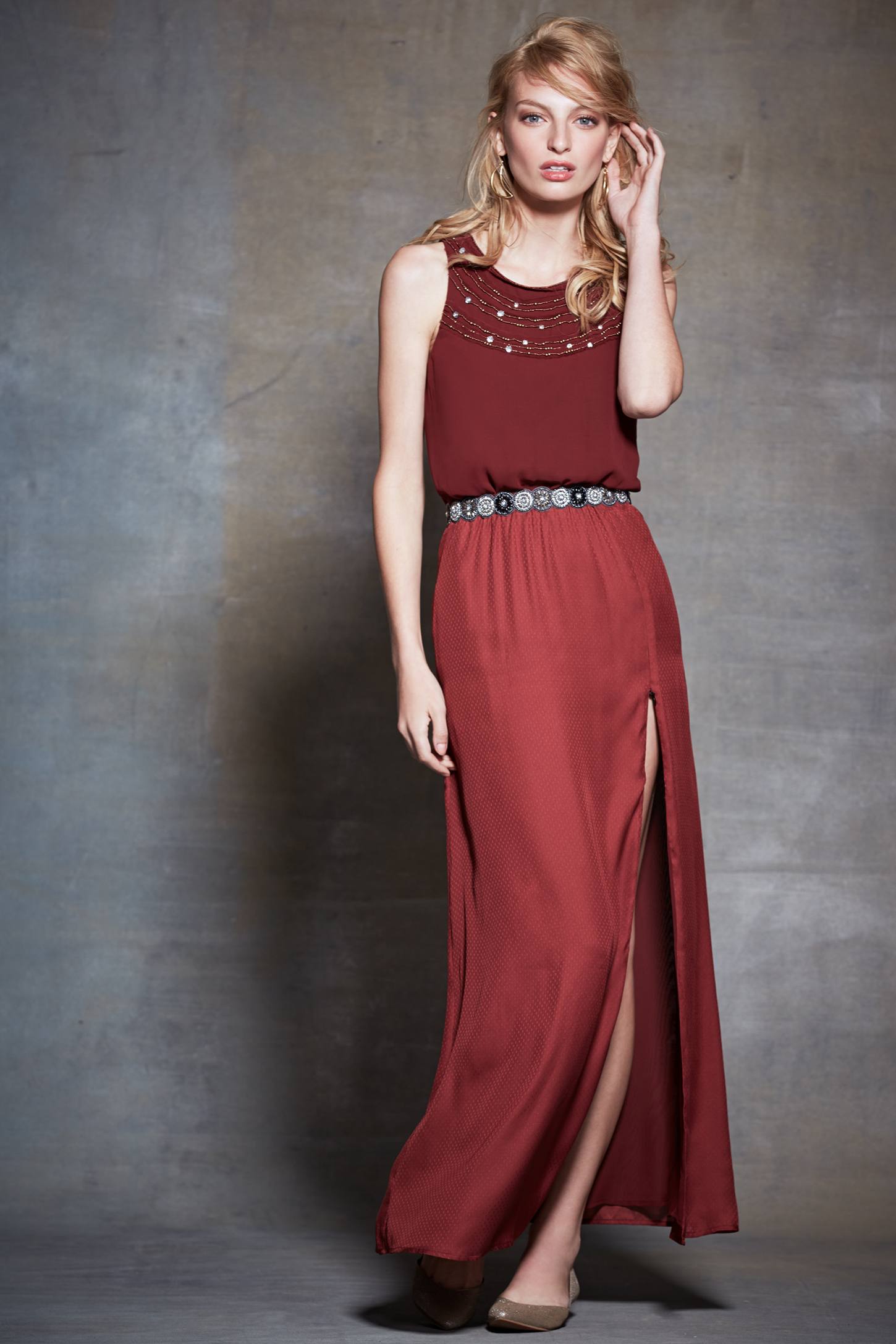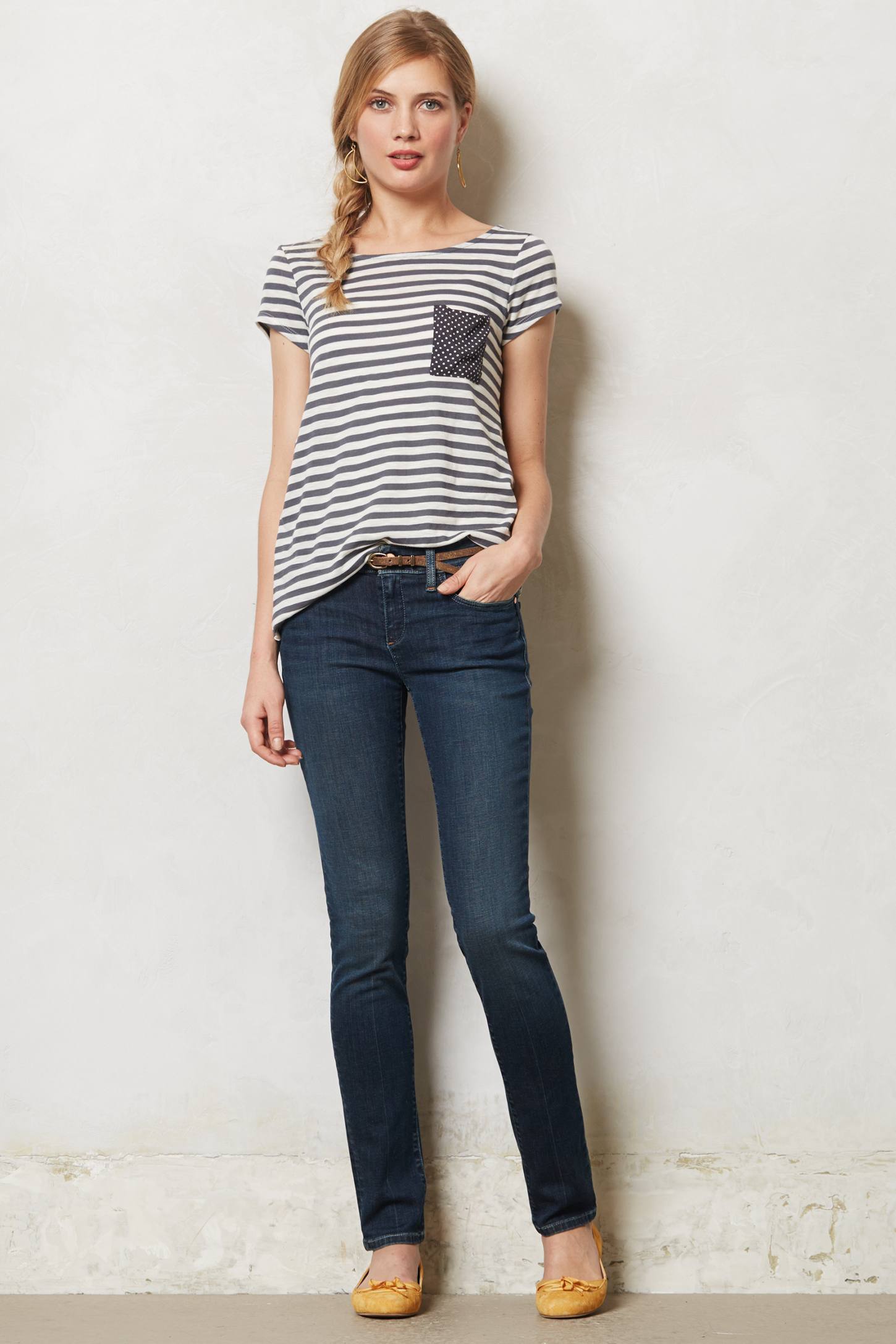In recent months I’ve noticed more and more angry emails coming my way about Anthropologie sizing. The feedback ranges from “It’s such a tease that they even show an item was made in an XL, because it’s always sold out a day or two after the item appears online” to “Does Anthropologie really carry items in a size 00/size 16? Because I’ve never seen any in-store.” If you’re a fringe size it seems like it’s getting harder and harder to find your size at full price and nearly impossible on sale.
At nationwide retailers like Anthropologie most items are designed to work on the full range of sizes. But sometimes a product is a hit with a certain segment and not others. Take the Ribbon Ruled Skirt (now $90) above — it’s sold out in sizes 0-6, with 8 and up still available on sale. Looking at the skirt could I have guessed that it would be more popular with smaller sizes? No way.
Asking a retailer to guess which sizes an item will be most popular in is an impossible task. That’s not the issue. It’s more a question of the game of inventory lead times and size runs. When ordering inventory of any item, retailers always order the most stock in the middle sizes (4-6-8). Fewer 2s and 10s. Fewest 0s, 12s, 14s and 16s. Isn’t it strange how the 12s, 14s and 16s are all considered fringe sizes when the average woman in the USA is now 5’4″, has a waist size of 34-35 inches and weighs between 140-150 lbs, with a dress size of 12-14? Fifty years ago, the average woman was 5’3″ with a waist size of approximately 24-25 inches; she weighed about 120 lbs and wore a size 8 (source). Keep in mind that in 1983 the US Department of Commerce dropped its uniform clothing sizing standard, so a size 8 by 1950s standards corresponds to a size 4 today.
Today, more women wear a size 16 than 0s and 2s combined (source). Yet retailers still consider anything above a size 12 ‘plus’ size and carry 1/3 to 1/2 as much stock in sizes 12 and up as they do in sizes 8 and down. It seems ludicrous to me in a period where many retailers are hurting for revenue that they’d ignore such an important customer segment!
Retailers often claim that plus sizes are the last sizes to sell out in-store. Old Navy for example used to carry up to size 20 womens in its stores nationwide, but stopped this practice in 2010 after they found the most leftover store inventory was in those sizes. But that’s like Dunkin Donuts saying it will stop selling Munchkins because it sells more donuts in a day.
one of the few Anthropologie items available in a size 16.
This isn’t a discussion about health. Save that for another time, another blog. This is a straightforward piece on my state of confusion. I don’t get it! Back in June the Huffington Post visited several NYC outposts of popular national retail chains.to see what sizes were available in store. They found no store carried above a size 14 in-store even if that chain’s website carried other sizing options.
I don’t buy that it’s harder to make clothing for plus size women — it’s certainly no harder than it is to make designs for sizes 2 and 0, whose bodies are in their own way very different than those of us in the vast middle land of 4s, 6s and 8s. It’s a bullshit excuse that feeds into our cultural vanity. As thin is the body type du jour, the unstated marketing message is clear: if you don’t wear below a size 12, stay out of our store.
In the context of Anthropologie specifically, I have noticed that the NYC stores regularly carry items that are available in size 16 in-store. They also carry size XLs when an item is made in that size. But those items are far fewer than the standard S-M-L sizes, perhaps one or two XLs for every 5-10 S-M-L. And outside of major metropolises like NYC I’m sure that a 16 or even a 14 is very difficult to find. Which seems so odd to me when it’s not like those sizes don’t exist elsewhere!
It’s not only the upper end of sizing that suffers. I can’t imagine being a 0 or a 00 in today’s retail market. Although thin is in it seems there is also a blind eye being turned towards the smallest among us.
I know that if it weren’t for vanity sizing I’d wear a size 8 at most retails and probably a size 10 in any luxury retailer that carried sizing that high. Meanwhile with vanity sizing taken into account I wear a 4 or a 6 depending on the store. In no world am I a 4 except the bizarro retail world.
So when items like the Lace Skirt Sweatshirt ($78, review) appear and I need a size X-Small, I know that true Smalls and X-Smalls are sized out. Additionally designers seem to think that if you wear a size 0 or 2 you must be 5’6″ or shorter but as my friend M can attest, that’s not the case. Standing a statuesque and healthy 5’11” tall, it’s nearly impossible for her to find jeans that are long enough for her 36″ inseam in her size 2 without spending $200 or more. Smaller sizes frequently lack accommodation for any kind of curves, as if to say no size 0s or 2s have hourglass or pear shapes.
like the Jeweled Arezzo Petite Maxi Dress ($298).
Recently Anthropologie has focused on releasing more petite-exclusive items which is very exciting for the 5’4″ and under crowd I’m sure! But sometimes the proportions of petite lines are still wrong for the shorter among us. My poor friend E often struggles with petite skirts that are too short while the regular version is far too long; tops where the sleeve is right in the petite size but the shoulders are too tight, etc.
While talls like me look on jealously from afar (above? sorry, couldn’t help myself.) retailers have a go at smaller statures while ironically the very height of people shown in their advertisements and on their websites gets ignored.
I’m ‘only’ 5’8″ but I have a 35″ inseam. One of the reasons I initially fell in love with Anthropologie was that they regularly carried pants and jeans in 35″ inseams. At the time (2003 or so) 34″ inseams were standard pants length at Anthro. I’ve watched that inseam shrink over the years to 33″ and more recently 31″ as the new standard. Granted ankle jeans are now in fashion but women are not getting shorter! We are getting taller. These days it’s difficult for me to find any pants style available in tall.
When tall sizes are available, they are usually online-only. Which means I have to pay shipping. Which in effect is a tax just to try on an item. That is lamer than the lamest lame. LAME. (I’m sure ladies above a size 12 and below a 4 are nodding in agreement right now, along with most petite women.) Brands spend so much time and money on customer surveys. I can say with confidence that the most frequent complaints about retail stores are: 1 – shipping charges; 2 – return policies and 3 – sizing inconsistencies/customers not able to find an item in their size.
Because retailers aren’t carrying the in-demand sizes in-store they claim there’s no demand for them. It’s ridiculous. There is an incredible untapped market out there and brands are just sitting on their hands, saying la-la-la and pretending like the opportunity doesn’t exist.
These days there is so much demographic information available and powerful software that can analyze and help retailers target exactly which stores need exactly how many of each size of each item. It’s not exactly cheap software at this point, but if it ups your quarterly revenue by 2-3% isn’t it worth it? I have one national department store client who works with an agency specializing in just these kind of analytics. It’s been fascinating sitting in on meetings where the top 5 customer profiles are detailed, down to their height, weight, buying habits, time of day they prefer to shop, how many items they’ll buy in a given visit and what promotion will work on October 15 that won’t work as well on November 15.
I’m not saying Anthropologie has to go that far. How about we start with the low-hanging fruit. Why can’t every Anthropologie item be made up to a size 16, and every size from 0 to 16 carried in-store? Can the company work on a uniform sizing standard across its in-house brands so that a size 6 in Moulinette Soeurs fits like a size 6 in Maeve? These are the things I’d like to see now. What about you?
Further reading:
Why Is It So Difficult for the Average American Woman to Shop for Clothes? — Fashionista
Plus Size Clothing Sold Online But Not In Stores Poses Problem For Shoppers — Huffington Post
Just What IS an Average Woman’s Size Anymore? — Web MD (note: from 2010)

